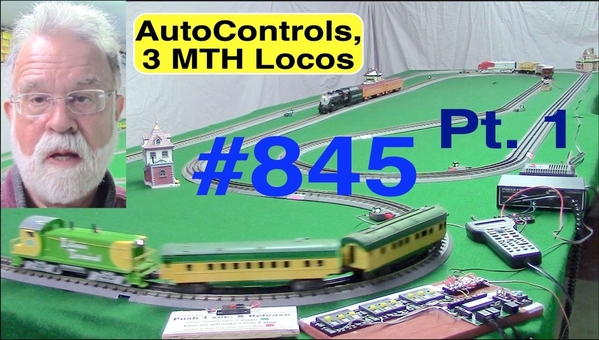* I have so far not been very effective at getting the 3-rail O-gauge guys to try this Automatic Control stuff, but I'm going to ask them to think "GRANDKIDS <==> PROGRAMMING";
* I.E., what better way is there to interest their grandkids in doing something challenging with their minds, then LEARNING to program a model train controller (Mini-Panel) ??
VIDEO LINK: https://youtu.be/pdaZyY0dnF0 OR http://vimeo.com/819580528
* This TrainProgramming.com Video 845 shows a DCC Programmable Model Train Controller (aka NCE Mini-Panel) controlling 3 MTH Proto-3 O-Ga. trains on a single loop -- using NO blocks and a SINGLE infrared detector.
* We can optionally blow their horns, or have them make an intermediate "station stop".
* We can also optionally keep the 2nd train that's in the "yard" moving continuously at a reduced speed instead of stopping -- so that there are always 2 trains moving on the layout.
~~~~~~~~~~
* The system is configured so that it can be used as a public display. It has a "public" pushbutton out in front, labeled "Push and Release. The public can use this public button to start the trains.
* A "REPEAT" switch controls whether the trains run just 1 cycle and stop, or whether they will keep running continuously.
* An Atlas 205 slide switch is used to control whether all 3 trains run, just 2 trains run, or just 1 train runs.
* This system uses several other toggle switches, to control whether the trains blow their horns, or make a station stop.
* A Z-Stuff DZ-1012 infrared detector with DZ-1008 relay is used to detect when the trains enter the yard area, and then another train is "released" out onto the mainline.






